2 October 2025
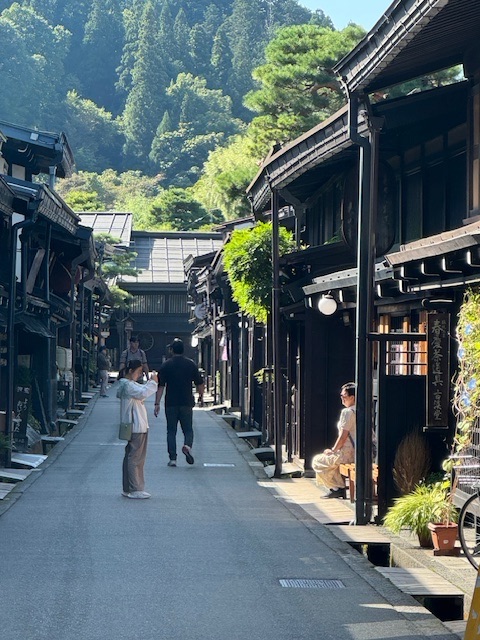
Takayama used to be the castle town which General Nagachika Kanamori built on behalf of his master at the end of the Sengoku era when Hideyosi Toyotomi ruled Japan. In 1692, however, Hida district came under the direct control of the Tokugawa government, and almost all samurai left Takayama. So l’m told.
Thereafter, Takayama flourished as a town of civilians. Therefore, Takayama was not a village built by the Samurai class, but by common people.
Takayama has retained much of its traditional architecture and is touted for its crafts, particularly yew-wood carving, Shunkei lacquerware, pottery and furniture. In other words, a shopper’ s paradise. I’m hoping for more.
Takayama’s Markets and a Dozen Snacks
I’m definitely not a shopper. The most I desire is a key chain from a memorable site, like the snow monkeys or an especially interesting town like Takayama. However, I do love markets.
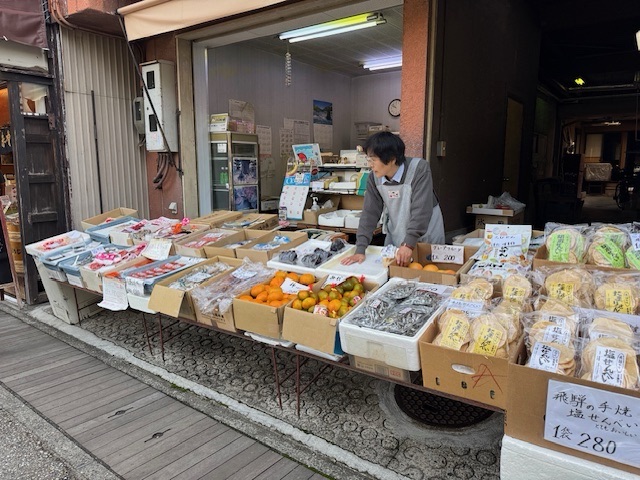
One would question taking photos of peppers, tomatoes or pickles. It isn’t the subject – it’s the color. Artfully arranged vegetables, flowers and crafts always attract the eye. Takayama’s markets may provide many photographic opportunities. Including a couple very elusive cats?
Colorful Photo Shoot
Takayama is known for its morning market (Asaichi), held daily in spring through autumn. Two main markets operate in town: the Miyagawa Market along the river and the Jinja-mae Market in front of the old government building. We spend time browsing the stalls at Miyagawa.
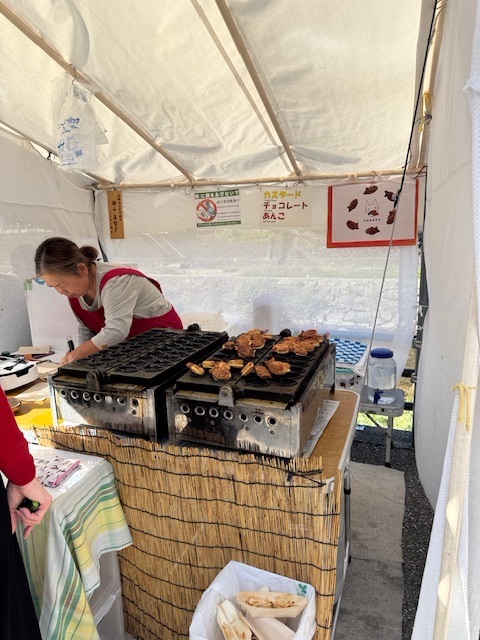
After experiencing markets around the world and surviving souks of Turkey and Morocco, stepping into Takayama’s market is a whole different experience. Absent are the stalls brimming with vibrant vegetables, fragrant herbs, and oddly shaped gourds, each one meticulously arranged as if auditioning for a food magazine cover.
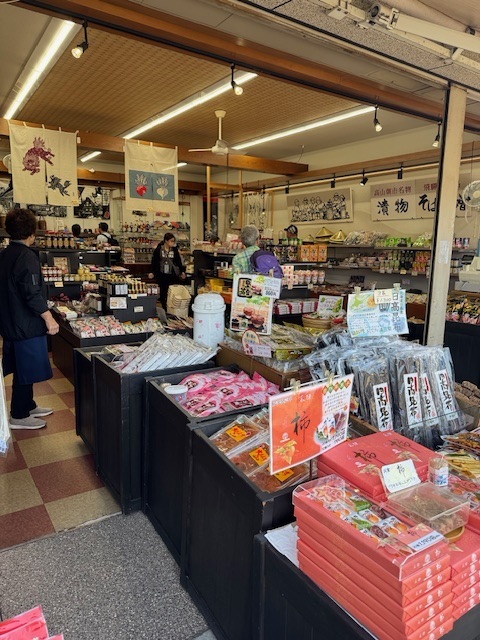
In Miyagawa, the emphasis is on fish – dried, fried or fresh – fish of mysterious names. Local Hida beef seasonings, miso, dried mushrooms, and anonymous foodstuffs abound. Western buyer beware: labels all in Japanese. My translation app gets a workout. A plethora of gelatinous goop abounds.
Venders greet me with cheerful bows, offering samples that make me feel both delighted and slightly obligated to eat. Absent is the hard sell, the yelling, the constant “miss, miss, come look.”
The air is a mix of crisp mountain freshness and the warm, nutty aroma of local snacks. I politely walk among locals; I find myself marveling at the orderliness. Nobody elbows anyone, no frantic shouting, just calm browsing. If I buy some aromatic snack, I must remember the sacred rule: stand still while eating. Also remember, give or receive money or an item with both hands! Even in open markets swamped by delicious snacks, etiquette is a must.
Takayama Matsuri Yataikaikan
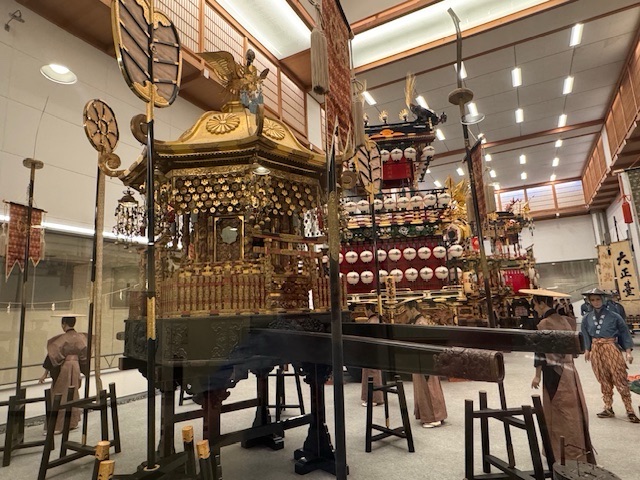
We visit the Takayama Festival Float Exhibition Hall. The hall displays examples of the traditional, hand-carved festival floats, or yatai, used in the biannual Japanese festivals. Because the floats are so fragile and valuable, they’re displayed on rotation, so the lineup changes across the seasons.
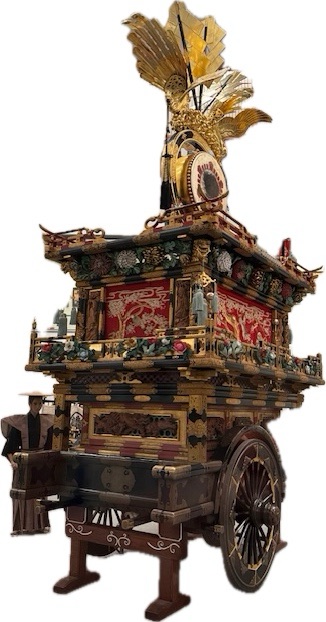
Floats (23 in all) are works of art — towering wooden structures built in the 17th–19th centuries, decorated with intricate carvings, gilded panels, lacquer, and colorful embroidered tapestries. Some even feature mechanical marionettes (karakuri ningyō) that perform during the festivals.
Unlike the short-lived floats of Pasadena’s Rose Parade, these dazzling contraptions get more action. Floats take center stage during the Takayama Matsuri, which actually refers to two festivals: the Sanno Matsuri in April at Hie Shrine, and the Hachiman Matsuri in October at Sakurayama Hachimangu Shrine. Both are considered among Japan’s most beautiful festivals. The floats move through the streets, lit up with lanterns at night and accompanied by traditional music.
Hachiman Matsuri
The autumn festival of Hachiman Matsuri celebrates the deity of the Hachimangu Sakurayama Shrine. The specific focus of the celebration varies, but typically includes honoring a deity in the Japanese Shinto religion (kami) who grants blessings like success in business and protection from bad luck. During the festival, a portable palanquin or shrine parades through Takayama’s streets in a solemn and spirited procession.
I imagine the sight of towering festival floats, some nearly three stories high, pulled by teams dressed in historic festival attire, accompanied by traditional music with flutes and drums. They roll through these narrow streets, all aglow with hundreds of paper lanterns, their light bouncing off polished, lacquered wood and golden carvings. Unfortunately, we are a few days early as the 2-day festival kicks off on the 9th. We avoid the crowds but also miss the spectacular parade.
The Sakurayama-Nikkokan Museum
Moving on from admiring festival floats, we walk to the Sakurayama-Nikkokan. This large hall contains beautiful models of the historic shrines around Japan.
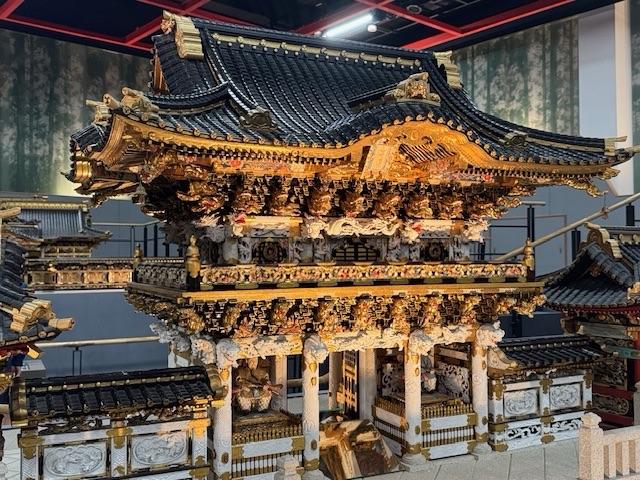
The star of the show is a finely crafted 1:10 scale replica of the Toshogu Shrine in Nikko. Created by 33 artisans over 15 years time, this model faithfully reproduces all 28 buildings of the shrine. It contains over half a million parts—tiny railed balconies, carved dragons, and golden embellishments included. The exhibit is more than just miniatures. A subtle, computerized lighting system simulates sunrise and sunset, lighting up the model and bringing the shrine to life.
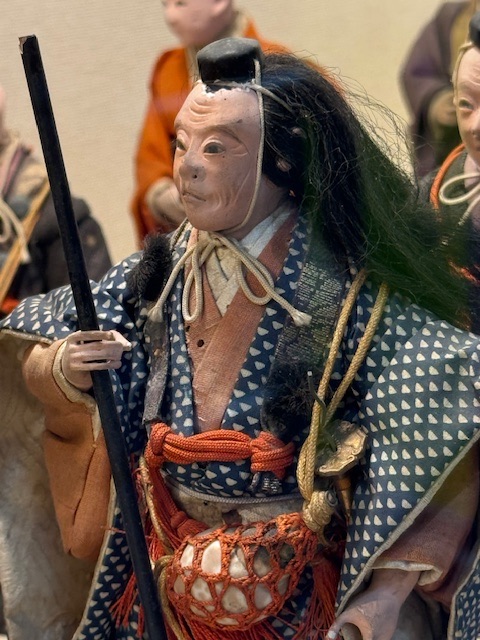
Sakurayama Hachimangu Shrine
Directly behind the hall lies the Sakurayama Hachimangu Shrine, the city’s oldest shrine, dating back to the 4th century. Dedicated to Hachiman, the Shinto god of war and protection, it has long been a spiritual anchor. Its broad stone steps lead up to a beautiful main hall framed by towering cedars, giving the place a peaceful, timeless atmosphere.
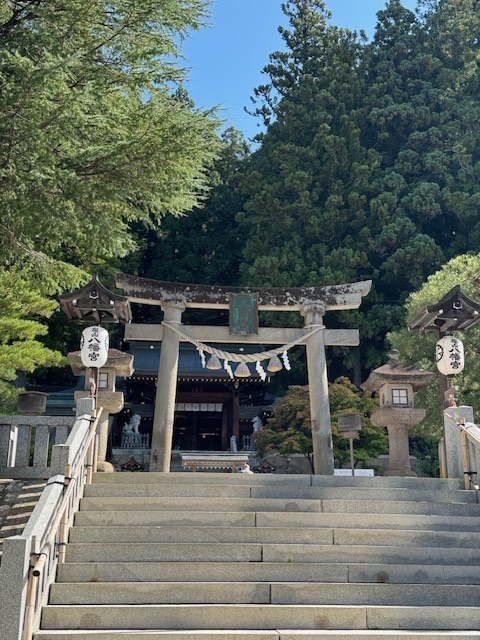
Twice a year, the shrine rages to life as the starting point of the Takayama Festival, when the ornate yatai parade through the streets. On quieter days, though, it’s more about the crisp mountain air, the rustle of trees, and a sense of tradition.
Kusakabe Folk Collection
Quaint Edo-period streets are lined with traditional merchant houses, restaurants, shops, and breweries. Among them, the Yoshijima Heritage House stands out as the finest. Formerly a sake brewery, a large cedar ball (sakabayashi) hangs under the eaves outside, marking the entrance to the brewery.
Next door stands the Kusakabe House. A traditional 2-story wooden structure with an exquisitely refined architectural interior, this residence represents architecture at its finest.
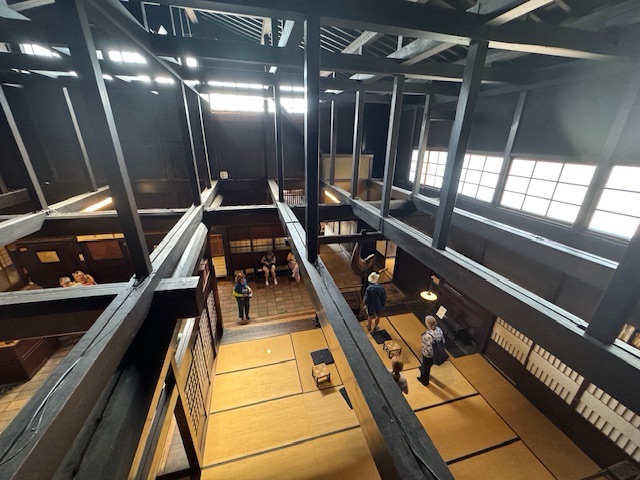
The Kusakabe famiy were successful Takayama merchants who thrived during the reign of the Tokugawa clan. The Kusakabe’s store was called Taniya, and it basically lent money to the public office. Later the Kusakabe family also ran Taniya as an exchange house. In 1875, the house burned down, and the present house was completely rebuilt four years later.
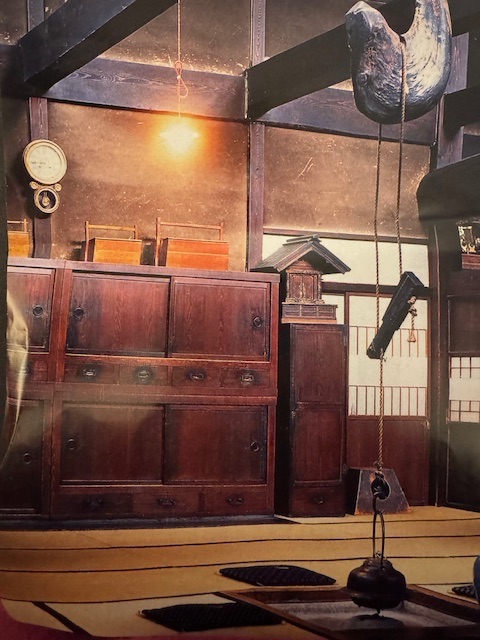
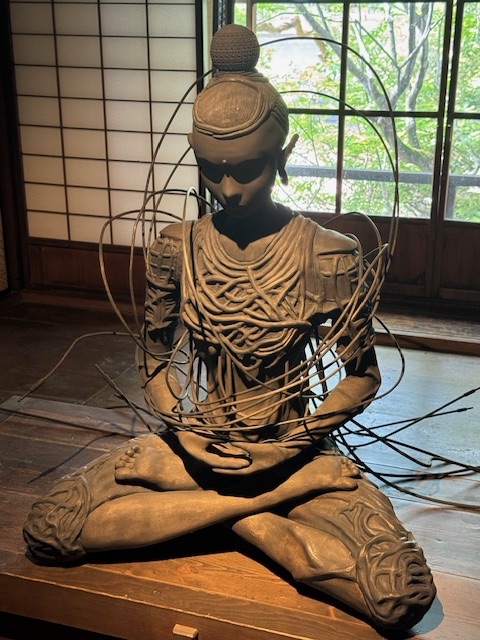
This Meiji-era merchant home has exposed intricate joinery, massive beams and pillars, and spacious interiors. Everything showcases the artistry of traditional Japanese design and carpentry.
I explored tatami-matted rooms, sliding shoji screens, an inner courtyard garden, and areas including a shop entrance, business rooms, guest quarters, a tea room, and a Buddhist altar. The house offers a vivid glimpse into early 20th-century Japanese merchant life. I’d say rather rich merchants.
Sanmachi Suji: Sarubobos and Saké Cups
This historic district of Takayama begs you to slow down and slowly wander its three main streets. Once the homes of wealthy merchants, the narrow lanes now bustle with shops hawking local treats, cozy cafés (not a wine bar in sight), a couple museums, and even a grocery or two.
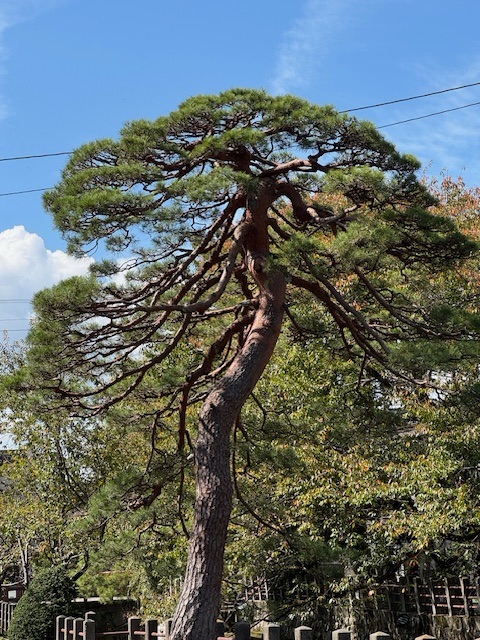
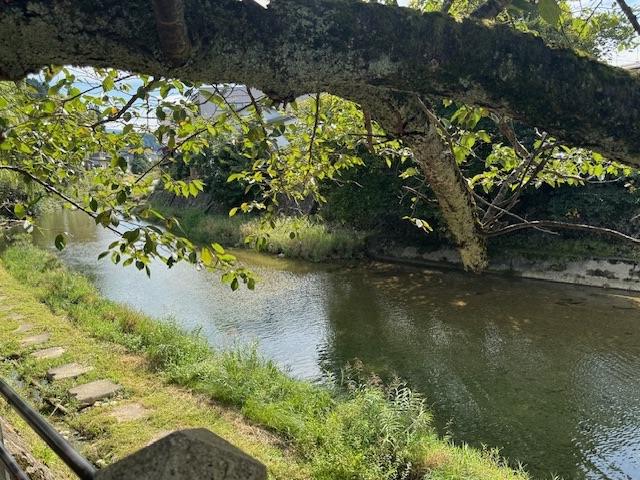
Edo-period charm lingers in every timbered beam, though some quirky places exist. I found the theme-based Snoopy Cha-Ya teahouse. The Skewered Soy Sauce Dumpling was taking a break so missed out on dango (sweet and chewy dumplings of rice balls on a stick). I commensurated with a soft served ice cream with bee honey.
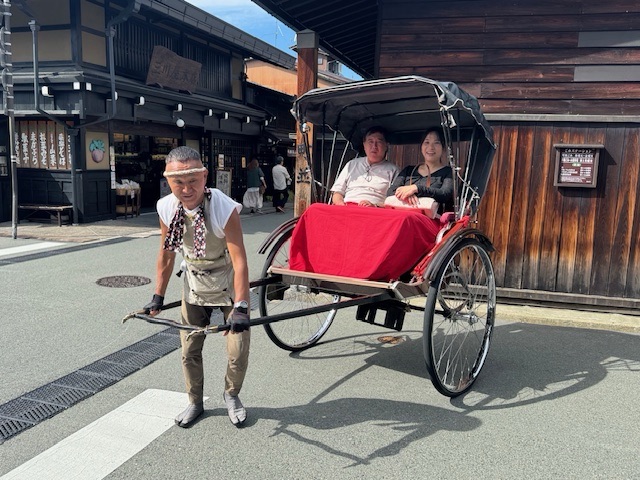
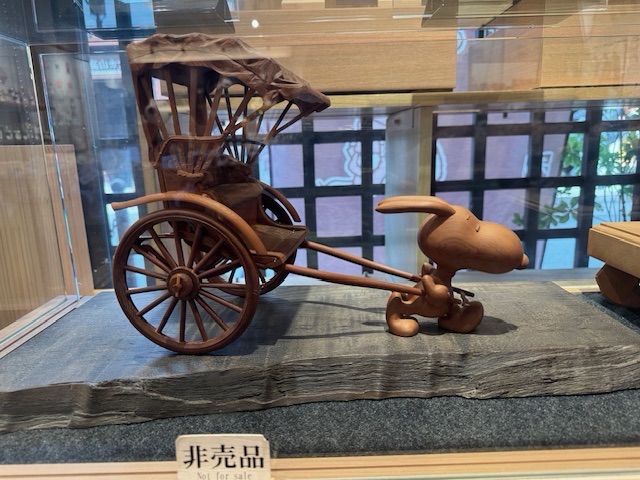
Saké for sipping, snacks for nibbling, sarubobo dolls for luck, and cedar ornaments for the Christmas tree—you’ll find it all piled high, tempting you at every turn. No walking while I ate the ice cream.
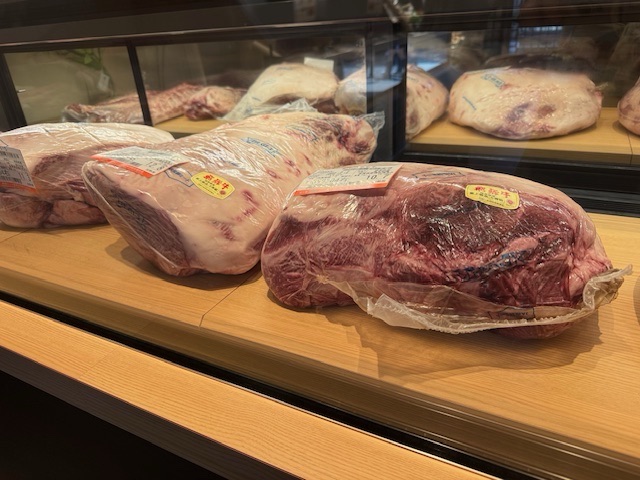
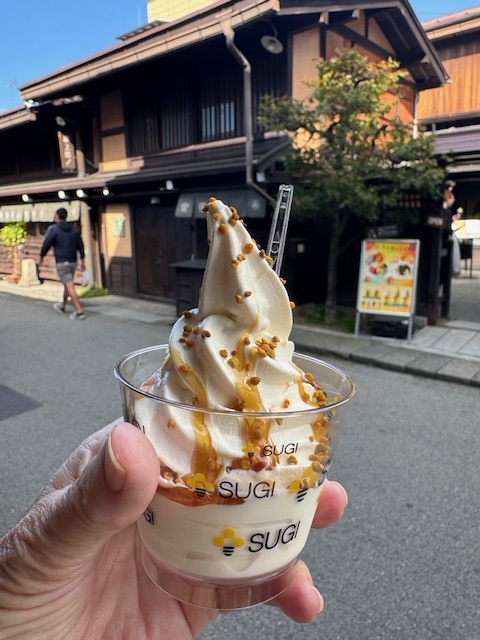
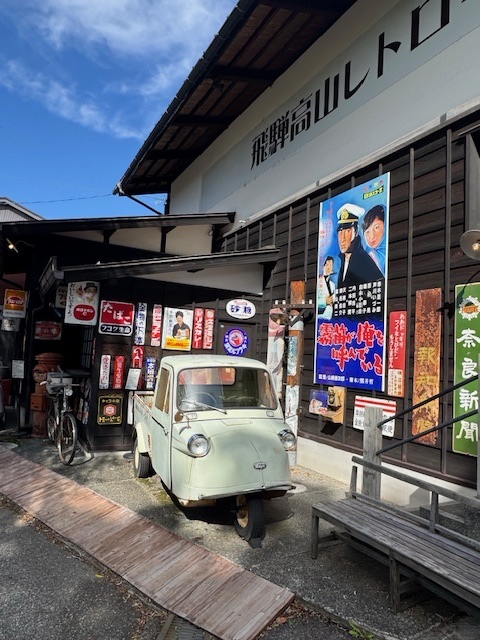

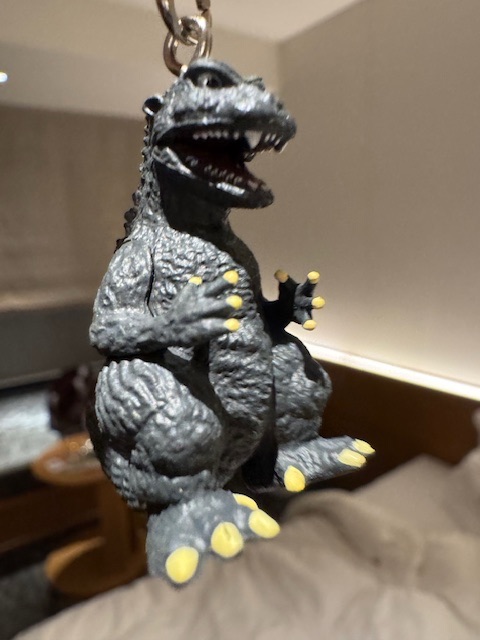
And just down at that shop on the corner? I found my Godzilla key chain!
1954 Godzilla
Overnight at Tokyu Stay
Staying a second night in the same hotel feels like a luxury. For dinner, we walk through the train station to reach the other side of town. Gone are the traditional wood houses. This is a modern area.
However, the dinner served is traditional and complex. Actually, it deserves its own explanation.
0 Comments